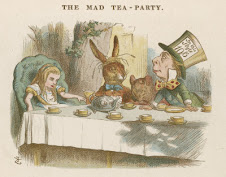Perhaps you've already heard the story. A Kansas high school student tweeted that the state's governor, Sam Brownback, "sucked" to her 61 followers on Twitter. When the governor's staff discovered the remark, they contacted the youth program the girl was involved with, and she was soon called to the principal's office of her school and told to write a letter of apology to the governor. To her credit, she refused, and eventually the governor was forced to issue an apology to her, saying that his staff had "overreacted."
This small episode demonstrates depths of the contempt for basic rights and liberties guaranteed by the Constitution among the ruling political class in the United States. Such "overreaction" is the primary mode of action for the petty tyrants and professional hysterics in the Republican and Democratic parties and for the legions of deluded citizens who support them throughout the country.
Recent legislative activity in the Congress aptly demonstrates the severity of the threat posed to constitutional government in the United States by the Democratic and Republican parties. Bipartisan alliances of Republicans and Democrats stand in stark opposition to the open internet and the freedom of speech online. Bipartisan alliances of Democrats and Republicans in the Congress believe the US military should be allowed to indefinitely detain US citizens apprehended on US soil without any form of due process. This extreme measure is even opposed by the Obama administration, which already claims it has the authority to execute American citizens at will as part of the war on terror. Further examples could be supplied ad infinitum.
Of course, without their deluded supporters, the Democrat-Republican political class wouldn't have a leg to stand on. But who are these people? And why do they continue to support the dictatorship of the two-party state? Consider the following lines from a letter to the editor of the Vindy news in Youngstown, Ohio. Excerpt:
The younger generation who want to succeed in life are fleeing the area in ever larger numbers to see what life is like in the real world where the two party system keeps elected officials from being bought and paid for by the party and unions they must negotiate with. [Emphasis added.]Are you done laughing yet? The world where the two-party system keeps elected officials from being bought and paid for is the imaginary fantasy world constructed and inhabited by Republicans and Democrats alike. How did the "real world" become a fable? It is a difficult question. Perhaps we should consult a philosopher. Friedrich Nietzsche supplied one possible explanation in his Twilight of the Idols:
HOW THE "TRUE WORLD" FINALLY BECAME A FABLE. The History of an Error
1. The true world — attainable for the sage, the pious, the virtuous man; he lives in it, he is it.
(The oldest form of the idea, relatively sensible, simple, and persuasive. A circumlocution for the sentence, "I, Plato, am the truth.")
2. The true world — unattainable for now, but promised for the sage, the pious, the virtuous man ("for the sinner who repents").
(Progress of the idea: it becomes more subtle, insidious, incomprehensible — it becomes female, it becomes Christian. )
3. The true world — unattainable, indemonstrable, unpromisable; but the very thought of it — a consolation, an obligation, an imperative.
(At bottom, the old sun, but seen through mist and skepticism. The idea has become elusive, pale, Nordic, Königsbergian.)
4. The true world — unattainable? At any rate, unattained. And being unattained, also unknown. Consequently, not consoling, redeeming, or obligating: how could something unknown obligate us?
(Gray morning. The first yawn of reason. The cockcrow of positivism.)
5. The "true" world — an idea which is no longer good for anything, not even obligating — an idea which has become useless and superfluous — consequently, a refuted idea: let us abolish it!
(Bright day; breakfast; return of bon sens and cheerfulness; Plato's embarrassed blush; pandemonium of all free spirits.)
6. The true world — we have abolished. What world has remained? The apparent one perhaps? But no! With the true world we have also abolished the apparent one.







